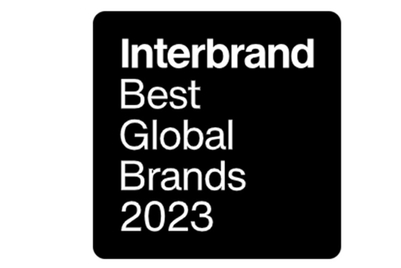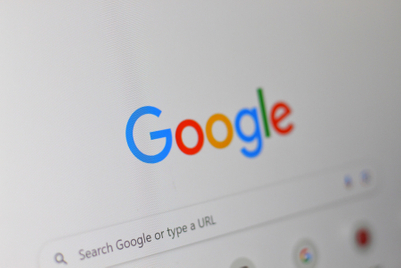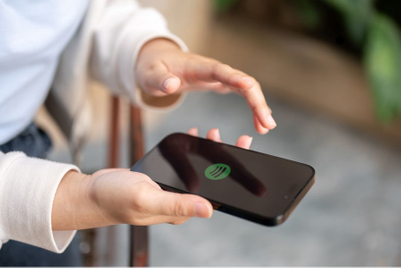.jpg&h=570&w=855&q=100&v=20250320&c=1)
Kids are the toughest audience you’ll ever face.
They don’t fake interest. They don’t pretend to understand your purpose. They don’t nod politely at your tagline. They either feel something or they don’t. And honestly, that’s as real as feedback gets. If they don’t feel it, it’s not working. Because that’s what branding really is, something you feel first and understand later.
Kids just don’t complicate it. Adults do.
I realised this while watching my 10-year-old son build a board game for a school project. He was meant to make a presentation on what digital detox is, why it matters, and the dangers of too much screen time. He refused. He said, “Papa, who will listen to me present? We hear this every day from teachers and parents. We already know screen time needs to be controlled.”
So instead, he decided to make something actionable and fun, something his classmates could actually relate to. DD31 (short for ‘Digital Detox for 31 Days’) was his solution. Ten colour-coded jars, each filled with prompts.
You spin a wheel, pick a card, and do something fun instead of reaching for your screen. No complex instructions, no grand mission statement, and definitely no preachy presentation. It’s colourful, simple, and a little unpredictable. And somehow, it may get kids to put their gadgets away voluntarily.
That, to me, is branding genius in its rawest form: make the right thing feel enjoyable, not obligatory. The outcome becomes the message.
Most brands try too hard to convince. Kids remind you that when something feels good, it doesn’t need explaining.
Even a child gets it
One principle I follow when it comes to strategy is this: explain it to a 10-year-old. It forces you to strip away jargon and make the complex simple. So let’s talk about brands that have really nailed “even a child gets it”. They’re not made for children, yet kids understand them immediately. They recognise the logo, they feel the emotion, and they somehow “get” what the brand stands for, without ever being the customer.
I usually hate using Apple as an example because it’s so overused and there is nothing about it that has not been told before, but here, I have no choice. Apple may intimidate you with its price, but never with its technology, product, or communication. Everything about it is simple, jargon-free, and genuinely easy to grasp.
When we were growing up, they didn’t sell us MP3 players; they sold us iPods. Then came iPads, not tablets, not handheld computers. You see an iPhone ad and it doesn’t shout about megapixels or processing speed; it just shows a striking photograph with a single line: Shot on iPhone. If that’s not childlike simplicity, what is?
Kids may not buy or use Apple products, but they know what Apple feels like. The sound, the light, the touch, it’s all built around curiosity and ease. That’s not a design decision; it’s a strategic one. Apple hides complexity behind intuition. You don’t need to explain it; you just know how it works.
The same holds true for Google. It might be the simplest interface in the world: one box, one button. Type something, get an answer. Children don’t know what algorithms or SEO are, yet they understand that typing in Google means 'finding'. That’s simplicity elevated to trust.
Airbnb does something similar. Even a child can understand what “belong anywhere” means. The tone, the visuals, and the simplicity of the idea speak directly to human emotion. It’s a brand built not on property, but on empathy.
Taj Hotels is another kind of brilliance. Kids might not know the brand name, but they can feel the experience. The moment they walk in, they sense that it’s special - the calm, the smell, the smiles. The brand speaks through atmosphere, not advertising. It makes you feel important without saying a word.
Starbucks works the same way. Kids can’t drink coffee, but they know it’s where adults go to feel a little relaxed, a little 'cool'. They recognise the green logo, the smell of roasted beans, and that familiar rhythm of names being called out. It’s familiarity as theatre. The brand’s repetition and ritual make it emotionally legible, even to a child.
Then there’s Fevicol, a brand that turned something as dull as adhesive into a cultural metaphor for strength. Kids remember the ads or the “unbreakable bond” imagery long before they understand what glue even does. That’s clarity in storytelling, not product marketing.
Spotify manages to make technology feel human. Its bright colours, motion, and copy are playful. The experience feels personal, alive, and musical even to someone too young to have their own account. Spotify’s design communicates rhythm and emotion, not data or algorithms.
And Ikea turns exploration into commerce. You don’t just shop at Ikea; you wander. You discover. You get lost on purpose. It’s furniture for adults, but the experience feels like a playground for everyone.
These brands work because they operate on emotional logic, not marketing logic. Their simplicity isn’t superficial; it’s structural.
Simplicity isn’t childish, it’s strategic
Simplicity is often misunderstood as basic. It’s actually the hardest thing to achieve. It means you’ve made choices. You’ve decided what not to say, not show, not complicate.
We often work with B2B brands where it’s difficult to explain their business to their uncles, let alone to a child. The product is complex, the offering abstract, and the audience highly technical. Which is exactly why simplicity becomes a strategic advantage. When you can distil that kind of complexity into something instantly understandable, you’ve already won half the battle.
The trick is not to simplify the product, but the promise. Instead of describing the machinery of what you do, define the emotion of what it enables. A logistics brand isn’t about supply chains; it’s about reliability. A cybersecurity brand isn’t about encryption; it’s about peace of mind. A data company isn’t about numbers; it’s about clarity.
When you focus on the emotion attached to the outcome, the communication shifts from explanation to understanding. You stop trying to sound smart, and you start to sound human. That’s when childlike simplicity becomes a sophisticated strategy.
Children are great teachers here. They’re emotionally focused. They feel one thing at a time, fully. That’s what makes their reactions pure.
When brands behave like that - direct, uncluttered, and self-assured, they cut through instantly.
If you can make a product intuitive enough for a child, you’ve done more than simplify. You’ve removed friction. And friction is the enemy of love.
What adults forget
Somewhere along the line, as brands grow up, they lose their curiosity. They become too serious, too careful. They build layers of tone guidelines and purpose decks until the brand stops feeling human. Kids remind you what brands often forget: that wonder, play, and honesty aren’t childish traits. They’re clarity in its purest form. Because if a brand can’t make you smile before it makes you think, it’s probably trying too hard.
The point of it all
If your brand can’t win a child’s attention, it probably doesn’t deserve an adult’s loyalty.
Every great brand begins with emotion, not persuasion, not logic, not purpose statements. Just that first spark of recognition: I like this. I get this. This feels right.
And that’s what the best brands in the world understand. They’re not childish. They’re just clear, warm, and emotionally fluent.
So, the next time you’re testing a big idea, try this.
Explain it to a 10-year-old. If they get it instantly, you’re probably building something worth keeping. If they don’t, maybe the problem isn’t their attention span. Maybe it’s your clarity.

-Kunal Vora, founder-partner, ABND








.jpg&h=334&w=500&q=100&v=20250320&c=1)
.jpg&h=334&w=500&q=100&v=20250320&c=1)








.jpg&h=268&w=401&q=100&v=20250320&c=1)
.jpg&h=268&w=401&q=100&v=20250320&c=1)
